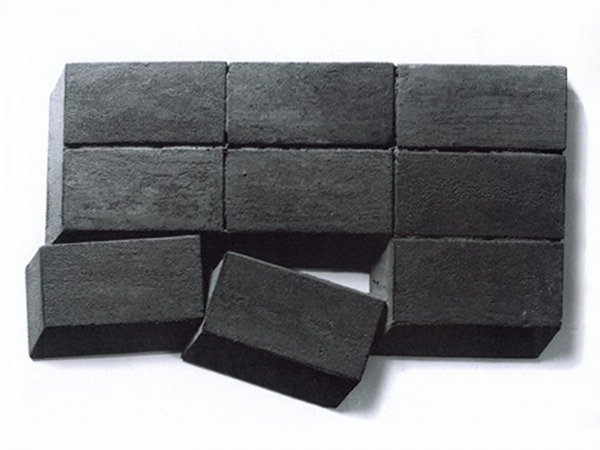Giuseppe Uncini
dal 24/6/2011 al 30/7/2011
Segnalato da
24/6/2011
Giuseppe Uncini
Galleria Cardi, Pietrasanta (LU)
In mostra numerose opere che esemplificano il suo percorso artistico, "sempre proteso a definire con un linguaggio essenziale e radicale la declinazione della sua maggiore invenzione linguistica, i Cementarmati": quelli dei primi anni '60, il Ferrocemento del '63, le due Strutture con ombra del '68, lo Spaziocemento n. 11 del 1994 e altre.

---english below
Negli ambienti della Galleria Cardi a Pietrasanta, sabato 25 giugno 2011 sarà aperta al pubblico la mostra di opere di Giuseppe Uncini, il grande artista dei Cementarmati, scomparso improvvisamente nella primavera del 2008.
Le importanti mostre tenutesi dal 2008 a oggi presso lo ZKM di Karlsruhe (2008), al MART di Trento e Rovereto (2008-2009), alla Neue Galerie am Landesmuseum Johanneun di Graz (2009) e la retrospettiva dedicatagli dal Centro Italiano Arte Contemporanea di Foligno con apertura il 21 giugno 2011, testimoniano il crescente interesse che circonda l’opera di questo maestro e la sua rigorosa traiettoria artistica
Nella mostra di Pietrasanta, infatti, sono presenti numerose opere che esemplificano il percorso artistico di Uncini, sempre proteso a definire con un linguaggio essenziale e radicale la declinazione della sua maggiore invenzione linguistica, i Cementarmati. Così, a partire dal 1961, data della sua prima mostra personale alla galleria L’Attico di Roma, saranno presenti a Pietrasanta il Cementarmato n. 27, 1961, il Cementarmato, 1963 e il Cementarmato n. 37, 1963, tre autentici masterpieces; inoltre, dei successivi cicli storici, saranno in mostra il Ferrocemento, 1963, le due Strutture con ombra, 1968, lo Spaziocemento n. 11, 1994, le cinque versioni dei Mattoni, 1970 e le ultime Architetture n. 183 e n. 196 dell’anno 2005.
Accanto a tale repertorio che ben rappresenta la varietà di elaborazioni di quel principio generativo dei Cementarmati, quali opere che formalizzano il requisito di autonomia semantica di una creazione plastica oggettualmente qualificata, saranno presenti anche alcuni disegni realizzati da Uncini nel 1974. Giuseppe Uncini, nato a Fabriano nel 1929, è considerato uno dei più importanti scultori italiani della seconda metà del XX secolo e la sua opera, nel solco aperto da Fontana, Burri, Colla e Mannucci, si è sviluppata entro quella temperie di radicale riformulazione del lessico pittorico-plastico avvenuta in Italia e in Europa alla fine degli anni Cinquanta a opera di artisti come Lo Savio, Castellani, Manzoni, Bonalumi, Schifano, Festa, Angeli, Gianni Colombo, Dadamaino e lui stesso, nonché di critici d’arte di forte matrice poetica come Emilio Villa o il francese Pierre Restany, già interessato a Yves Klein e spesso attivo in Italia. Le opere di Uncini sono presenti in numerosi musei europei e in collezioni pubbliche e private in tutto il mondo.
Bruno Corà
---english
In the Galleria Cardi's Pietrasanta venue, we will be presenting to the public a show of works by Giuseppe Uncini, the great artist of Cementarmati, or works in reinforced concrete, who died unexpectedly in the spring of 2008.
The growing interest in this undoubted master and his rigorous artistic development is testified to by the important shows of his work held since 2008 in the ZKM, Karlsruhe (2008); MART, Trento and Rovereto (2008-2009); the Neue Galerie am Landesmuseum Johanneun, Graz (2009); and the retrospective show that opened on 21 June 2011 in the Centro Italiano Arte Contemporanea, Foligno.
In the Pietrasanta show, in fact, there are many works exemplifying Uncini's career which was always concerned with developing, through a minimal and radical language, his greatest linguistic invention: the Cementarmati. And so here you will be able to see three genuine masterpieces: Cementarmato n. 27, 1961; Cementarmato, 1963; and Cementarmato n. 37, 1963, all works seen in his first solo show in the L'Attico gallery in Rome in 1961. Furthermore, from other later historical series, the show will be presenting Ferrocemento, 1963; the two Strutture con ombra, 1968; Spaziocemento n. 11, 1994; five versions of Mattoni, 1970; and Architetture n. 183 dating from 2005.
Besides these pieces, which are highly representative of the variety of possibilities generated by the Cementarmati, we will also be showing various drawings made by Uncini in 1974. These formalize the need for the semantic autonomy of his wholly sculptural creations. Giuseppe Uncini was born in Fabriano in 1929. He is considered one of the most important Italian sculptors of the second half of the twentieth century. His work, following in the footsteps of Fontana, Burri, Colla, and Mannucci, developed during the period of radical reformulation of the vocabulary of painting and sculpture that was brought about in Italy and the rest of Europe at the end of the 1950s by such artists as Lo Savio, Castellani, Manzoni, Bonalumi, Schifano, Festa, Angeli, Gianni Colombo, Dadamaino, as well as Unicini himself. This was also promoted by such highly poetical art critics as Emilio Villa and the Frenchman Pierre Restany, someone already at the time interested in Yves Klein and who was frequently active in Italy. Uncini's work is to be seen in many European museums and in public and private collections throughout the world.
Bruno Corà
Inaugurazione: sabato 25 giugno 2011 ore 19
Galleria Cardi
via Padre Eugenio Barsanti, 45 - Pietrasanta (LU)
Orari della galleria: lun - dom 11-13 e 18-24



